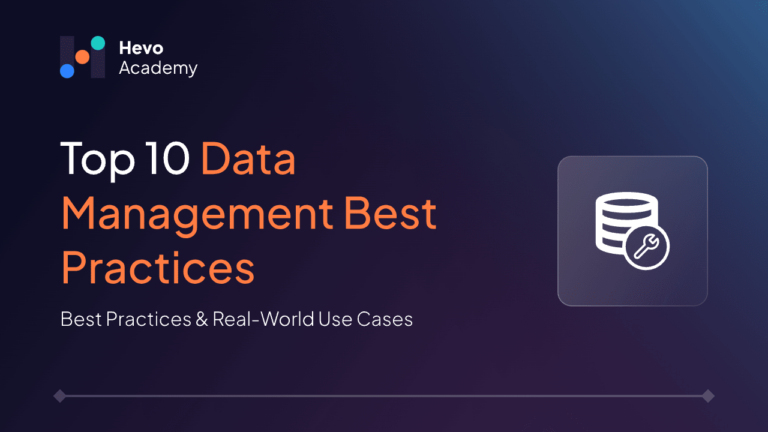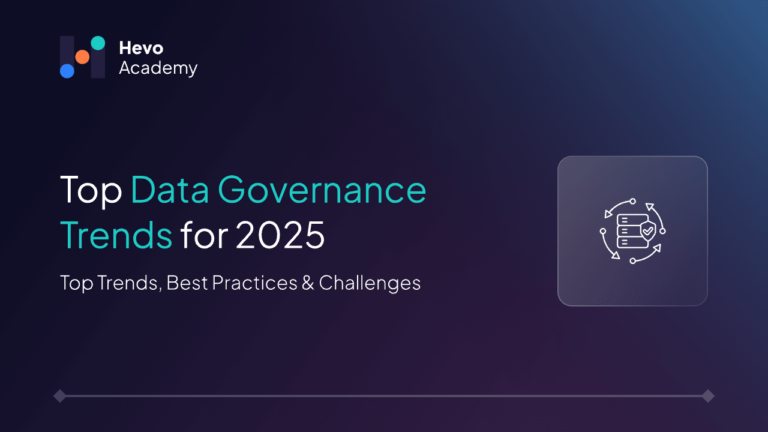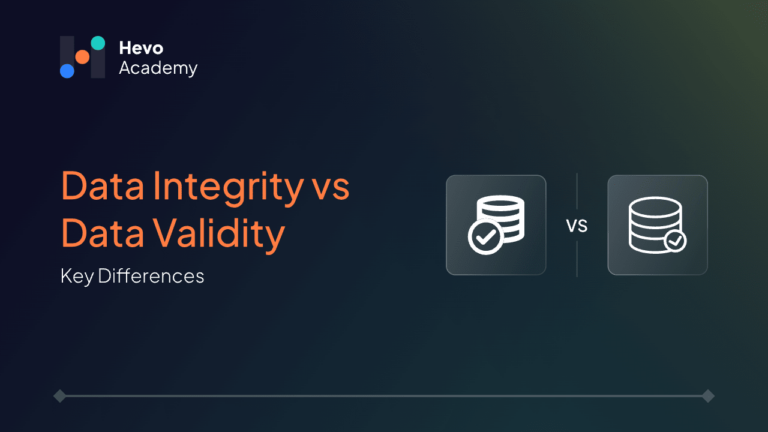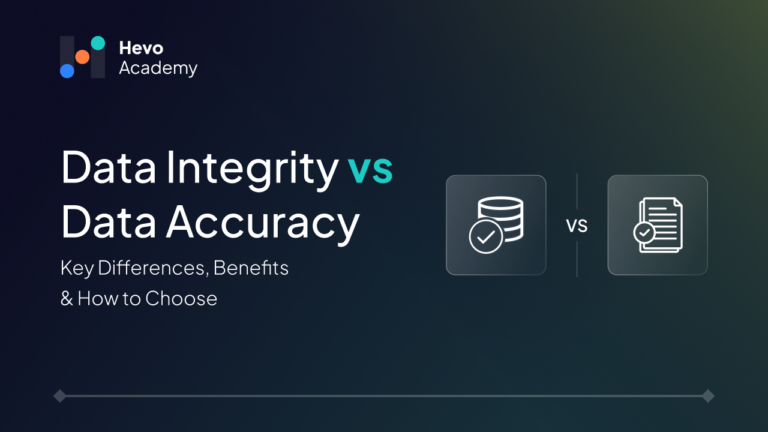In this modern world, data integrity is a serious issue for the success of a business, providing accurate, consistent, and reliable information. The absence of safeguards presents an organization with a high risk of data corruption, security violations, and compliance failure that can result in financial and reputational damage. Data integrity best practices are applied for the sake of trust, regulations, and informed business decisions through the use of accurate data. This blog explores the top 10 best practices for guaranteeing data integrity, how the different factors affect it, and why it is necessary for enterprises.
Table of Contents
What Is Data Integrity?
Data integrity refers to the accuracy, consistency, reliability, and completeness of data throughout its lifespan. It safeguards information from being distorted or altered and provides a way to share information that can only be accessed by authorized users. Data integrity incorporates all the key elements, such as data validation, security protocols, and legal requirements. It is also a fundamental aspect of maintaining and protecting critical information for both large and small businesses.
What Are the Top 10 Data Integrity Best Practices?
It is important to maintain data integrity. Below are ten best practices for protecting data from corruption, unauthorized access, and loss.
1. Data Validation and Verification
Before processing and storing the data, we must check different constraints, such as accuracy, completeness, and data formatting errors for data validation. Also, verification confirms that data contains valid information and must be corrected through review and uniformity checks. Database schema validation is a tool used for automated validation or a real-time validation check using manual input in a software application that helps to reduce errors and maintain data integrity.
2. Implementing Access Control Measures
The illegal privilege to important data can negotiate its integrity. To avoid this security risk, we implement strict control measures, which include multi-factor authentication (MFA), role-based access control (RBAC), and some least privilege principles or policies. Organizations must audit the user permissions frequently, implement strong password policies, and ensure authorized access and modification of critical data by using identity management systems.
3. Encrypting Data for Enhanced Security
Data encryption is crucial for safeguarding sensitive information from unauthorized modification and breaches. Encryption of data at rest and in transit must be unreadable without decryption keys if it is intercepted. Applying the best encryption standards, e.g., TLS for data transmission and AES-256 for data storage, improves data security and helps maintain data integrity.
4. Creating Regular Backup and Recovery Strategies
Data loss caused by cyberattacks, hardware failure, or accidental deletion has a severe impact on business operations. Backups are regularly taken to make the data recoverable in case of an incident. Organizations should implement automated backup solutions, follow the 3–2–1 backup rule (three copies of the data with two copies on separate media and one copy off-site), and test recovery procedures periodically to ensure quick recovery of data.
5. Maintaining Audit Trails and Logs
All modifications, accesses, and interactions with data can be tracked through audit trails and logs, which can help organizations detect anomalies and unauthorized changes. Timestamps, user actions, and system events should be logged into mechanisms. Having centralized log management solutions and SIEMs (Security Information and Event Management) allows businesses to look into data integrity threats and comply with ADLR (GDPR) and HIPPA, amongst other regulations.
6. Establishing Robust Error Handling Procedures
The correct management of data processing errors remains vital for maintaining data integrity. Thus, robust error-handling systems become necessary. To maintain data integrity, businesses must utilize automated detection tools for errors and implement alert systems with specified protocols for error resolution. Database constraints, together with validation scripts and error-checking algorithms, protect systems from corrupt data entry.
7. Educate the Workspace on Data Best Practices
Among the top reasons that damage data integrity are errors made by humans. Staff members need proper training regarding optimal approaches for cleaning, safe storage, and processing operational data. Organizations achieve better data integrity through continuous cybersecurity training programs that explain both phishing risks and secure data practices.
8. Eliminating Duplicate Data Records
The presence of duplicate records creates confusion in data and creates additional information that triggers the wrong analytical results. Database deduplication requires the utilization of unique constraints together with automated duplicate detection technologies to achieve clean and reliable datasets.
9. Conducting Penetration Tests and Security Assessments
Scheduled security evaluations and penetration testing processes may reveal data integrity risks. Cyberattack simulations need to be run by businesses so that they may test their defenses while addressing all the security weaknesses found through prompt implementation of corrective measures. Vulnerability scanners, intrusion detection systems, and third-party security audit services can protect businesses from altering or corrupting threats to their data.
10. Establish a Data Governance Policy
The strong data governance framework provides structured procedures for data integrity management. The policies also define data owners, establish compliance policies, and implement standards for handling data. The organization assigns data stewards to maintain regulations, including GDPR, through continuous policy updates based on changing business needs and emerging security dangers.
The Importance of Data Integrity for Modern Business Success
The maintenance of accurate data operations combined with regulatory adherence and customer trust depends on data integrity for businesses. Modern enterprises need data integrity because of the following fundamental reasons:
- Accurate Decision Making – An organization’s reliable data enables businesses to achieve strategic decisions with lower risks and maximal efficiency.
- Regulatory Compliance – Businesses in various industries must comply with strict governing requirements, such as GDPR, HIPAA, and SOX, which enforce data security standards.
- Enhanced Security and Fraud Prevention – Data integrity systems implementing enhanced protection methods create secure environments for business and customer information to combat threats and fraud attempts alongside illegal modification.
- Improved Operational Efficiency – Eliminating data inconsistencies produces operational efficiencies by reducing duplicate processes and enhancing business productivity.
- Customer Trust and Brand Reputation – Strong data integrity helps companies protect their reputations for reliability among customers and business partners.
What Are the Factors Affecting Data Integrity?

The principal components which affect data integrity consist of the following key elements:
- Human Error – The entry of wrong data by humans, accidental deletions, and configuration errors leads to data inconsistencies.
- Cybersecurity Threats – The confidentiality of data is jeopardized by numerous cyber dangers, such as data breaches, malware infections, and unauthorized entry into the system.
- Poor Data Governance – A poor data governance structure between organizations lacks specified management rules and clear ownership and governance structures, which leads to inconsistent and unapproved modifications.
- System Failures and Hardware Malfunctions – System and hardware breakdowns disrupt business operations, damaging data and causing it to be unintentionally lost or inconsistent. Disruptions in data integrity configurations stem from disk failures, power outages, and software bugs.
- Uncontrolled Data Modifications – The absence of controlled data modification and inadequate data migration procedures may lead to damaged or repeated records.
Conclusion
Data integrity is crucial as it ensures data accuracy, security and compliance for business maintenance. Data validation, encryption, access control, and frequent backups are the key practices that ensure the safety of data from exploitation and unauthorized modification. Also, other factors like cyber threats, human error, and bad administration can compromise data integrity, requiring preventive measures. Strong data integrity can enhance customer trust, decision-making, and operational efficiency. In a data-driven world, businesses must prioritize data consistency, security, and compliance during their data management process.
Try a 14-day free trial and experience the feature-rich Hevo suite firsthand. Also, check out our unbeatable pricing to choose the best plan for your organization.
FAQs
1. What are the seven principles of data integrity?
The seven principles of data integrity ensure data is accurate, consistent, and secure. They include ALCOA+ principles:
1. Attributable
2. Legible
3. Contemporaneous
4. Original
5. Accurate
6. Completeness
7. Consistency
2. What are the three rules of data integrity?
The three main rules of data integrity are:
– Entity Integrity: To prevent duplicate or null entries, each record in a database (Db) must have a unique identifier (e.g., primary key).
– Referential Integrity – Maintains uniformity in relationships between tables by confirming foreign keys reference valid primary keys.
– Domain Integrity – Ensures data values conform to predefined rules, formats, and constraints.
3. What are the four main phases of data integrity?
The four main phases of data integrity in data management include:
– Data Collection – Gathering accurate and reliable data through proper validation and standard formats.
– Data Storage – Storing data securely with encryption, access controls, and database integrity constraints.
– Data Processing – Ensuring data transformations, calculations, and analysis maintain accuracy and consistency.
– Data Maintenance & Auditing – Regular monitoring, audits, and backups to prevent corruption, unauthorized modifications, or data loss.






